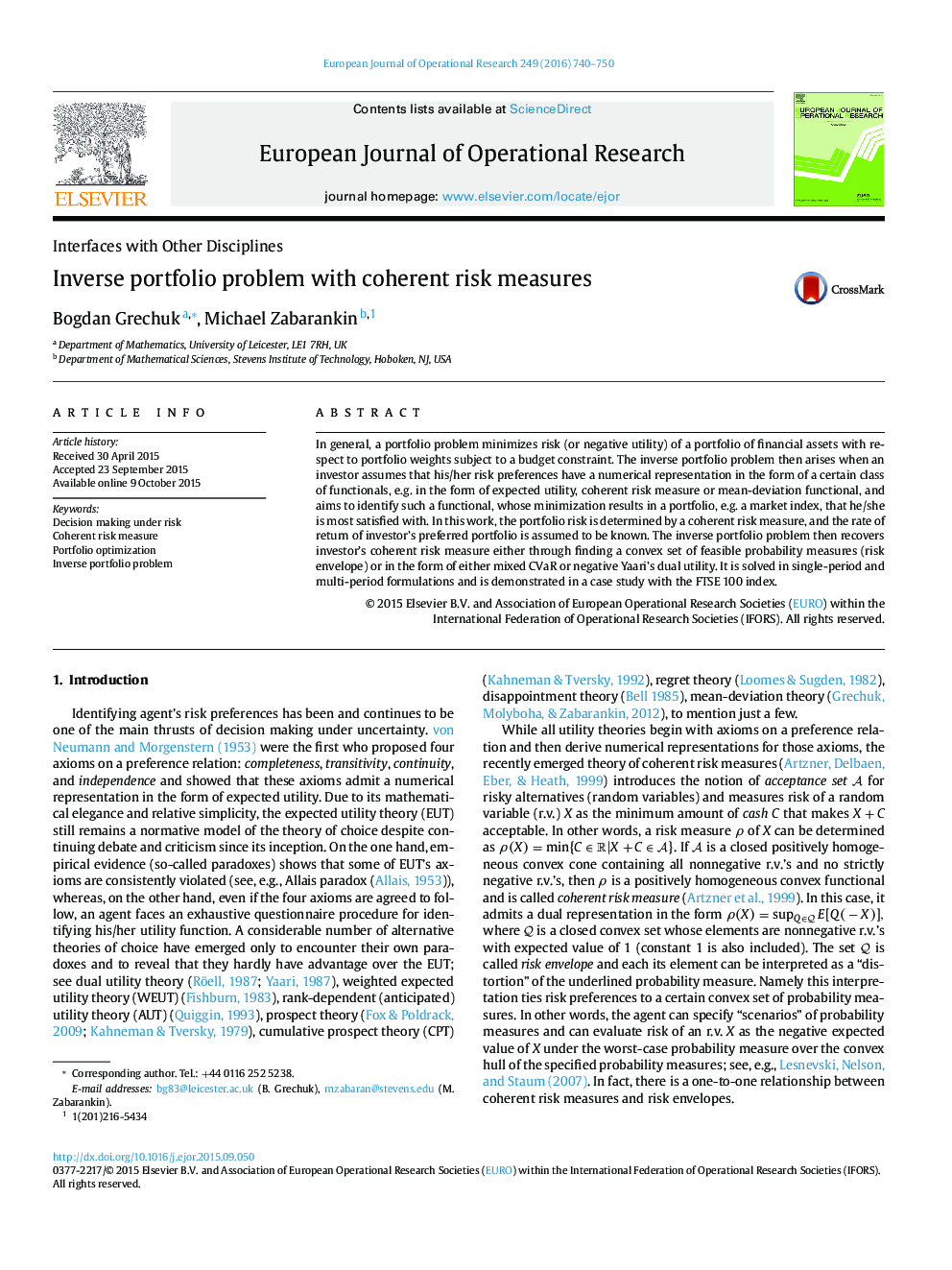| کد مقاله | کد نشریه | سال انتشار | مقاله انگلیسی | نسخه تمام متن |
|---|---|---|---|---|
| 480746 | 1445989 | 2016 | 11 صفحه PDF | دانلود رایگان |
• An inverse portfolio problem finds a coherent risk measure for a given optimal portfolio.
• Necessary and sufficient conditions for the existence of such a risk measure are obtained.
• A risk envelope characterization of an optimal solution is presented.
• If the exact solution do not exists, an approximate one in the form of a mixed CVaRs is found.
In general, a portfolio problem minimizes risk (or negative utility) of a portfolio of financial assets with respect to portfolio weights subject to a budget constraint. The inverse portfolio problem then arises when an investor assumes that his/her risk preferences have a numerical representation in the form of a certain class of functionals, e.g. in the form of expected utility, coherent risk measure or mean-deviation functional, and aims to identify such a functional, whose minimization results in a portfolio, e.g. a market index, that he/she is most satisfied with. In this work, the portfolio risk is determined by a coherent risk measure, and the rate of return of investor’s preferred portfolio is assumed to be known. The inverse portfolio problem then recovers investor’s coherent risk measure either through finding a convex set of feasible probability measures (risk envelope) or in the form of either mixed CVaR or negative Yaari’s dual utility. It is solved in single-period and multi-period formulations and is demonstrated in a case study with the FTSE 100 index.
Journal: European Journal of Operational Research - Volume 249, Issue 2, 1 March 2016, Pages 740–750
